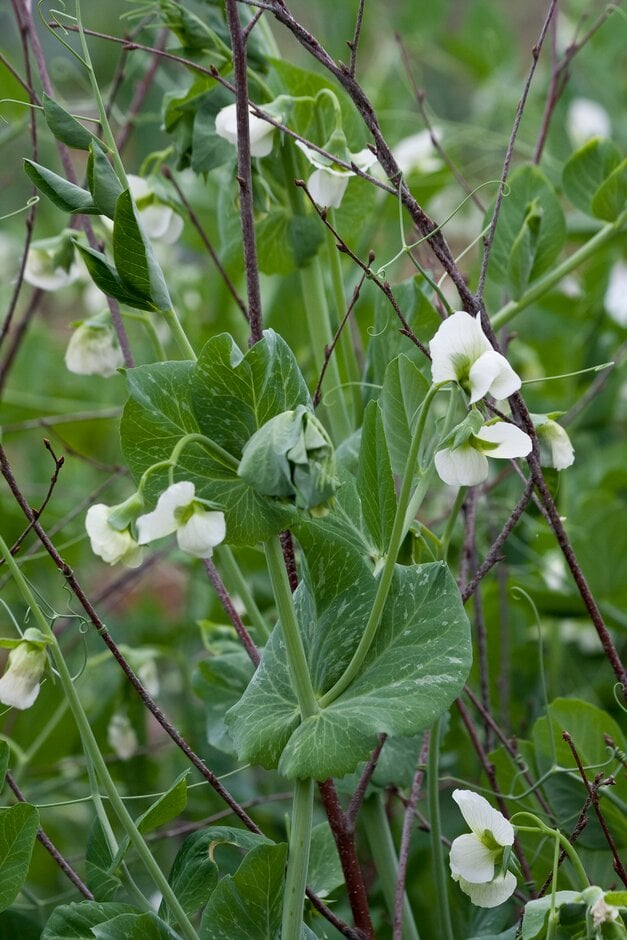Size
Ultimate height
0.5–1 metresTime to ultimate height
1 yearUltimate spread
0.5–1 metresGrowing conditions
Moisture
Moist but well–drained, Well–drainedpH
Alkaline, NeutralColour & scent
| Stem | Flower | Foliage | Fruit | |
| Spring | Green | |||
|---|---|---|---|---|
| Summer | White | Green | ||
| Autumn | ||||
| Winter |
Position
- Full sun
- Partial shade
Aspect
West–facing or South–facing
Exposure
Sheltered Hardiness
H4Botanical details
- Family
- Fabaceae
- Native to GB / Ireland
- No
- Foliage
- Deciduous
- Habit
- Climbing
- Genus
A very small genus of annual, flowering plants from legume family. Native to SW Asia and NE Africa, species P. sativum is widely cultivated for food. Hollow. Climbing or trailing stems bear compound leaves and tendrils. Flowers are butterfly-shaped, 1-3 per stalk. The fruit is a pod
- Name status
Accepted
How to grow
Cultivation
Peas grow best in rich, well-drained, neutral or alkaline soils in a sunny position. Dwarf cultivars can be supported with pea sticks or pea netting
Propagation
Propagate by seed. See sowing vegetable seeds
Suggested planting locations and garden types
- Patio and container plants
Pruning
No pruning required
Pests
Pea moth, pea and bean weevil, birds and mice
Diseases
Love gardening
Sign up to receive regular gardening tips, inspiration, offers and more
View our Privacy Policy
Get involved
The Royal Horticultural Society is the UK’s leading gardening charity. We aim to enrich everyone’s life through plants, and make the UK a greener and more beautiful place.
